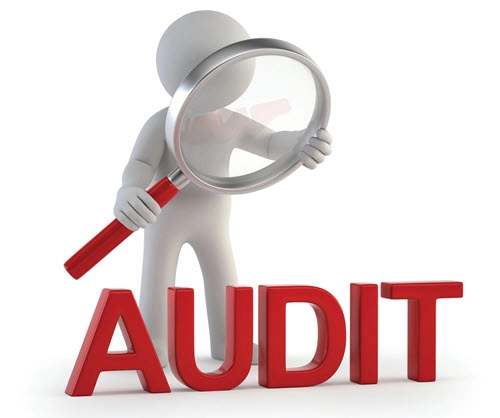Boost Telehealth Documentation With This Advice
Warning: Expect auditors to focus on telehealth claims. During the COVID-19 pandemic, many practices have benefited from the Medicare telehealth expansion, the HIPAA notice of enforcement discretion related to telehealth waivers, and the halting of healthcare-related claims reviews. Unfortunately, audits are back on the table — and telehealth services claims will likely be a primary target in the months ahead. Now: Whether you’re ready or not, Medicare fee-for-service claims reviews are back. “Regardless of the status” of the public health emergency (PHE), Medicare carriers reactivated Targeted Probe & Educate pre- and post-payment reviews on August 3, according to a Centers for Medicare & Medicaid Services (CMS) Frequently Asked Question (FAQ) set. Supplemental Medical Review Contractors and Recovery Audit Contractors restarted their audits that day, too. Though the brief points out that COVID-19 hardships will be taken into account, providers should expect things to be back to business as usual. Auditors will follow billing and coding guidelines while adhering to regulations, the FAQ suggests. Practices should also be ready for reviews of their telehealth claims as well. That was the word from Frank Cohen, director of analytics and business intelligence with Doctors Management, during the firm’s July 16 webinar “Audit Analytics: Post-Pandemic Preparation.” Practices that aren’t prepared for these reviews could face having to refund money they’ve collected, and during a time when physicians’ offices are already stretched thin financially, he said. “It’s not just that the pandemic has been a financial disaster for a lot of healthcare organizations, but it’s changing the way the government is going to approach auditing to some degree,” he added. Past Audits Suggest Telehealth Errors Are Rampant Although telehealth was in play prior to the pandemic, you could measure the United States’ volume of telemedicine services in the tens of thousands at that point, Cohen said. “But since the COVID pandemic, you can now measure them in the tens of millions. By 2026, they’re predicting it will be a $95 billion industry for telehealth.” Therefore, he says, government entities will investigate whether claims for these significant expenditures are being reported and documented properly. However, past audits indicate that errors are common among these claims. Interesting: “In a past audit, when the HHS Office of Inspector General (OIG) looked at an audit of 100 claims in a sample of all telehealth services, 69 percent met requirements, so that means 31 percent of all telehealth services did not meet requirements,” Cohen said. “If we apply that to a $30 billion market for the government, that means close to $10 billion faces the potential to be recouped. There was a study done in South Carolina in 2016 or 2017 where they found 96 percent of telehealth services were improperly documented.” Confusion Reigns in Medical Practices Now that audits of telehealth claims have restarted, remember that the reviewers are looking for a wide range of issues. Although you may be confident that you don’t have “intent” to improperly report these claims, an auditor may feel differently. “Although we associate fraud with intent, ‘intent’ is something that’s a perception,” said Scott Kraft, CPC, CPMA, senior compliance consultant with Doctors Management, during the webinar. In fact, he adds, someone may look at your records and find that your documentation skills are “broadly incompetent” due to lack of training, but the reviewer may perceive that as intent. One thing Kraft has seen during early audit work is that there is quite a bit of confusion between audio-only visits and those visits that include both audio and video. “Most relaxed rules have given you a much wider berth for video communication than what telehealth previously had,” he said. For example, there are things like FaceTime or interactive services that haven’t been cleared security-wise that are fine during the length of the PHE. However, the burden of documentation lands on the provider to state whether they performed an audio visit or if it included both audio and video — and Kraft knows from Medicare encounters that there may be situations where patients may not know how to do an interactive video call. “I’ve already seen dozens of telehealth encounters, in the limited audit work I’ve done in this area, where I have no idea based on the documentation if it was audio or video,” he said. “But in the descriptions for the codes 99201-99215 [Office or other outpatient visit…] that are typically used for telehealth, the face-to-face requirement still applies; it just has to be done by video.” When audio is used without video, the right codes to report are 99441-99443 (Telephone evaluation and management service), Kraft noted. “But the burden falls on the provider to make sure it’s clear in the documentation whether the visit is taking place from an audio versus video perspective,” he said. Practices should always include a statement in the note that makes clear that the visit took place via audio and video communication when applicable, “and I encourage people to document whether it’s via FaceTime or some other service, but it should be clear how the visit was done to ensure that when reviewed, it’s clear that it was a telehealth service and not a telephone service,” advised Kraft. Ensure Documentation Clear for Billing Based on Time “One thing that was done that works in favor of the providers is that during the PHE, the E/M service level can be selected by medical decision making [MDM] or time, and time is defined as all time associated with the E/M service,” Kraft said. This is due to CMS adopting the 2021 rule for time documentation rather than the current regulations, which require you to ensure that 50 percent of the visit is spent on counseling or coordination of care. “So when we look at the documentation and we see time documented, we aren’t looking at what we think of as the current traditional time rule where more than half is spent on counseling/coordination of care — we really only need the total typical service time that should be aligned with the E/M code,” explained Kraft. Tip: When he audits, Kraft looks at time documented and the MDM, and asks himself which coding method most favors the provider. “So I may see documentation that states the visit lasted 10 minutes, which would align with 99212, but the MDM supports 99213, so in that scenario I’m not constrained to 99212 because it took 10 minutes,” he says. He also reminds practices that the same amount of time can’t be documented for every patient. “Time should be unique and specific to each patient encounter,” Kraft said. “When every single 99214 says 25 minutes for telehealth, that’s concerning. So we do want to make sure time is accurate for each patient.” Best bet: In addition, make sure your documentation doesn’t include statements for services that can only be performed during in-person visits. “I see a lot of telehealth visits right now that have documented exams for things that I would like the physician to demonstrate how they managed to perform them,” Kraft said. “You aren’t palpating a patient, for example.” “I see situations where the parent or guardian is touching the patient and describing it and that may be clinically helpful in terms of treatment, but I don’t consider that to be part of the physician’s exam to hear a parent say the patient is ‘warm,’” Kraft says. “It’s up to the physician’s clinical judgement to render findings based on what comes within the exam.” See PHE Extension Details As COVID-19 continues to spike across the nation, the feds offer some good news. On July 23, Department of Health and Human Services (HHS) Secretary Alex Azar renewed the public health emergency (PHE). The change was effective on July 25 and extends the PHE through Oct. 23, 2020 for an additional 90 days. This is the second extension Azar has issued after originally declaring the COVID-19 pandemic a PHE on Jan. 31. The extension is a real boon for providers struggling to combat the virus. “This renewal extends the wide array of waivers and flexibilities that have been issued by HHS in response to COVID-19,” says attorney Madison Pool with Arnall, Golden, Gregory LLP in online analysis. However, practices must remember that the feds can roll back policies at any time, and the Secretary can terminate the PHE at his discretion. “The declaration will not extend indefinitely, so providers should keep one eye to the future and be aware of how changes implemented to respond to COVID-19 will have to be reverted once the flexibilities terminate,” Pool advises. Read the PHE update at www.phe.gov/emergency/news/healthactions/phe/Pages/covid19-23June2020.aspx.


